In this issue:
Meet the Caique: The Clown of the Parrot World
Keeping Our Feathers Warm in Winter!
To Clip or Not To Clip: The Benefits of Clipping Your Bird's Wings
Movie Time: 🍿🦜 How To Clip Your parrot’s Wings Safely
Reader Resources
To our readers:
Have a comment, a topic you’d like us to cover or suggestion? Let us know!
Happy New Year! We love your feathers! 🌞📚🦜
1.
Meet the Caique: The Clown of the Parrot World
💚 by Kalyn
Meet the Caique: The Clown of the Parrot World
Caiques aren’t just called the clowns of the parrot world for nothing—they’re pure fun in feathered form! In fact, if you don’t know how to have fun yet, your Caique will happily show you the way. These birds are all about adventure, mischief, and spreading joy, proving they’re more than just playful jokers!
Are you looking for a parrot with personality plus? Then let us introduce you to the Caique (pronounced “kigh-eeks”), a small but mighty parrot known for its playful antics and vibrant plumage. This month, we're diving deep into the world of the Caique, exploring their unique characteristics and care needs to help you determine if this energetic bird is the right fit for you.
Origin and Appearance:
Caiques hail from the Amazon Basin in South America. These compact parrots measure around 9–10 inches (23–25 cm) in length and weigh between 150–170 grams. Their bright and eye-catching colors make them stand out in a crowd. The two main species are the Black-Headed Caique (black head with an orange-yellow body) and the White-Bellied Caique (white belly with green wings and orange and yellow accents).
Personality and Temperament:
Caiques are often called the “clowns” of the parrot world, and for good reason! They are known for their playful, energetic, and mischievous nature. They love to climb, bounce, and interact with their owners. While they are highly entertaining, they are also confident and determined to enjoy themselves, which sometimes calls for an experienced parrot owner.
These intelligent birds thrive on attention and can become bored or destructive without adequate mental stimulation. The best way to prevent this is to have two Caiques, as they provide each other companionship when their humans aren’t available.
What is it like having a Caique?
Imagine a feathered extrovert, always ready for a party. That's a Caique! These super-smart parrots are quick learners. Show them something once, twice, maybe three times, and they’ve usually got it down. They are incredibly friendly and playful, especially with their flock—whether that's a group of fellow birds or their beloved humans. If they were human, they would be considered outgoing, even a bit flamboyant, but they aren't as loud as some other parrot species. Caiques form strong bonds with their human and bird flock and are highly social, always eager for interaction and playtime.
Diet:
A well-balanced caique diet includes:
Pellets: High-quality commercial parrot pellets should be the staple.
Fresh Foods, Vegetables: Offer a variety of fresh produce like carrots, broccoli, mango, and leafy greens. Always avoid avocados, chocolate, and caffeine, as these are toxic to birds.
Seeds and Nuts: Offer these sparingly as treats, as they are high in fat.
Lifespan and Care:
With proper care, Caiques can live 25–30 years, and some have even been known to live longer. This is a long-term commitment! Here are some essential care needs:
Housing: Provide a spacious cage with plenty of toys, perches, and room to move. Caiques also need daily out-of-cage time for exercise and interaction.
Social Interaction: These social birds thrive on regular interaction with their owners. They are not ideal for individuals who are frequently away from home.
Noise Level: While not as loud as some parrots, they can be vocal and enjoy making noises, including whistles and squawks.
Special Notes:
Caiques are wonderful companions for experienced bird owners who can meet their social and activity needs. They are intelligent and bond closely with their families, making them loving companions when given proper care and attention. Their playful antics and bright personalities bring endless joy—but remember, owning a Caique is a commitment to keeping them happy and healthy for many years to come. 🦜
2.
Keeping Our Feathers Warm in Winter!
by Dulce the Parrotlet
Hey there, flock friends! Tiki here, your resident Parrotlet rescue with some winter wisdom. When it gets chilly, us parrots need a cozy spot to keep warm, just like you do! In the wild, we can fly off to find warmth and shelter, but in our cages, we depend on you to provide it.
A nest box filled with soft pine shavings? Oh, it’s heavenly! We can snuggle right in and trap some of our own body heat. It’s especially important for little guys like me (and my Pyrrhura buddies) who can get cold more easily. We Parrotlets, for example, have a very small temperature tolerance. Don’t put us out in the heat or the cold! We like things around 70 degrees, give or take 10 - only!
If your birdie lives outside, make sure their cage is covered or placed somewhere protected from rain, snow, and that icy wind. No one likes soggy feathers, trust me! Indoors, keep our spot away from drafts, and maybe even give us a nice perch near a cozy corner.
Remember, each of us parrots comes from a different part of the world, so what works for a tropical conure might not be enough for a desert-dwelling cockatiel. Knowing our needs is key to keeping us happy and healthy through the winter. Thanks for keeping us warm, humans—you’re the best flock we could ask for!
3. To Clip or Not To Clip:
The Benefits of Clipping Your Bird's Wings
By Xelha
Note: Clipping is a heated topic! Max, our Cape Parrot, came to us with only 1 wing! Not being able to fly is sad for a parrot, but it doesn’t stop them from enjoying their lives when clipping is done safely and for the right reasons. (Note: the breeder we got Max from said the parents hurt him, biting his wing off- he was NOT hurt during clipping).
Responsible Clipping
Wing clipping is a common practice among bird owners that involves -safely- trimming the flight feathers of pet birds to reduce their ability to fly. While the decision to clip a bird's wings can be a topic of debate, it can have several benefits when done correctly and with the bird's welfare in mind.
1. Improved Safety
Clipping a bird's wings helps prevent accidents that can occur when birds fly freely in unfamiliar or unsafe environments. This includes flying into windows, ceiling fans, mirrors, or open flames, which can result in severe injuries. Additionally, it reduces the risk of escape, as even a momentary lapse in supervision near an open door or window could lead to the bird flying away.
2. Better Training and Bonding
Limited flight can make it easier to train and handle your bird, as they are less likely to fly away during interactions. This can strengthen the bond between owner and bird, as the bird learns to rely more on their owner for transportation and support.
3. Controlled Environment Exploration
Lightly clipped birds can fly around and exercise, but within a safer, more controlled environment. This can help birds build confidence while reducing potential hazards associated with full-flight exploration.
4. Calmer Temperament
Some birds exhibit fewer signs of stress or aggression when their wings are clipped. By preventing them from engaging in unpredictable flight, their focus can shift to engaging with their environment and their owner.
Considerations
It’s essential to approach wing clipping responsibly. Consult an avian veterinarian or an experienced professional to ensure proper clipping that doesn’t harm the bird. Over-clipping can cause physical and emotional distress. Additionally, wing clipping should never be seen as a substitute for providing a safe, enriching environment for your bird.
Ultimately, wing clipping can be beneficial for both the bird and the owner when done thoughtfully and for the right reasons. It ensures the bird’s safety while fostering a stronger connection between pet and owner.
4. Movie Time!
🍿🦜 How To Clip Your parrot’s Wings Safely
5. Reader Resources:
Looking For A Bird?
Rescue, Baby Or Rehome
Looking to RESCUE? Try Bird Gardens of Naples
Looking for a BABY? Visit Parrot Bliss
We have baby parrotlets, White-bellied Caiques, Blue-headed Macaw, Indian Ringneck, Green-cheek Conures and a Hahn’s!
6. Recipe! (In Case you missed it last time)
From the cookbook for parrots that I’m currently writing: (Recipe by Kalyn & Makayla Sadamori)
FLAXSEED AND ALMOND FLOUR CRACKERS
These homemade crackers offer a nutritious treat for both and your feathered companion. Perfect for a quick snack or on-the-go adventures, they are simple to prepare and delightfully tasty. Packed with healthy fats and antioxidants, these crackers provide many nutritional benefits for your bird.
Preparation time: 10 minutes
Cooking time: 20 minutes
Makes about 45 crackers (1 x 11/2 inches [2.5 x 3.8 cm])
Basic dough ingredients:
1 cup (120 g) finely ground blanched almond flour
1/2 cup (56 g) finely ground flaxseed meal
1 Tbsp (15 ml) extra-virgin olive oil
1/2 to 1 tsp each: dried rosemary, dried thyme, dried oregano, ground cumin
1 tsp black sesame seeds
1 tsp white sesame seeds (or just use 2 teaspoons of whichever color you have)
1/2 cup (120 ml) water
For the bird parent:
You can split the dough into two and add a half a teaspoon of salt to your part. Mix well to incorporate in the dough
Directions:
1. Preheat the oven to 180C (350F) and have ready a large sheet pan.
2. In a large bowl, combine the blanched almond flour, flaxseed meal, olive oil, all the spices, and the sesame seeds.
3. Start adding the water spoon by spoon and mix together. The dough will begin to stick together.
Place the dough on a piece of parchment paper. Press it lightly with your hands to form a rectangular shape. Cover with another piece of parchment paper and roll slowly with a rolling pin, aiming to create as uniform a rectangular shape as possible, until the dough reaches cracker thickness.
4. Carefully remove the top paper and transfer the bottom paper with the dough to a sheet pan. Using a pizza cutter, cut the dough into squares or your desired shapes.
Bake for about 20 minutes. Turn the heat off and leave the crackers in the oven for another 5 minutes. Because thickness and oven temperatures may vary, I recommend checking them frequently after the 12-minute mark. They burn easily, so it's better to be safe than sorry. Let cool on the baking sheet. Store in an airtight container to preserve the crunchiness.
Subscribe to the 🐦 Feathered Newsletter! Connect with fellow parrot lovers and share your passion for these amazing birds!✨
Beak! Subscribe 🐦 Now!🌟
Kalyn’s books on parrots
About Kalyn
I’m an author, parront and quite passionate about my parrots. I love learning about parrots, having them and sharing what I learn in my books and videos. I also like writing novels, I’ve created child and adult parrot coloring books - all to help support our flock.
About Xelha
I’m a college student who loves parrots! Conures are my favorites! I also love digital art and traveling.
❤️
Having over 22 species means we have a loud, colorful and loving home!
See you next time! Sqwack!



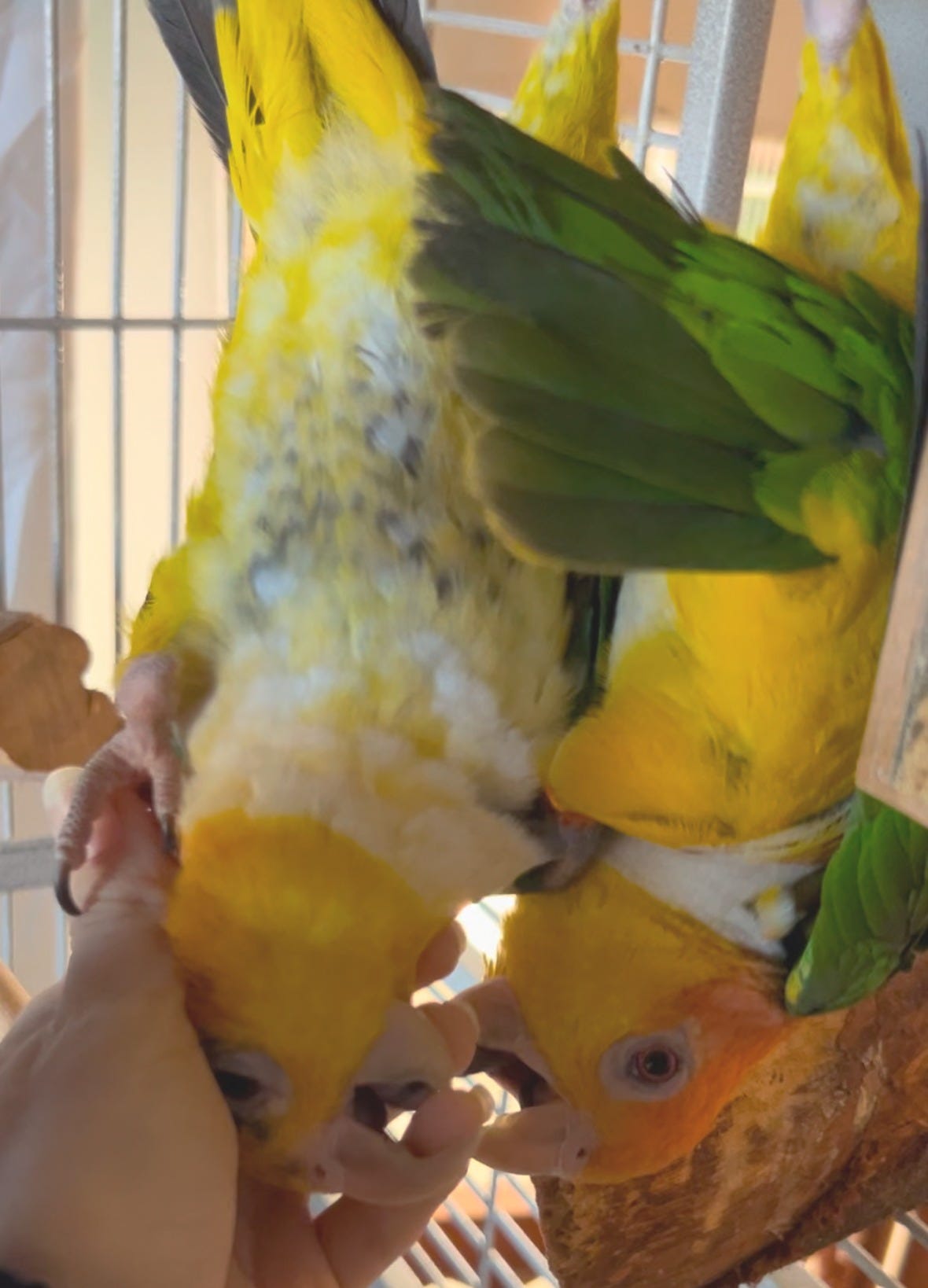
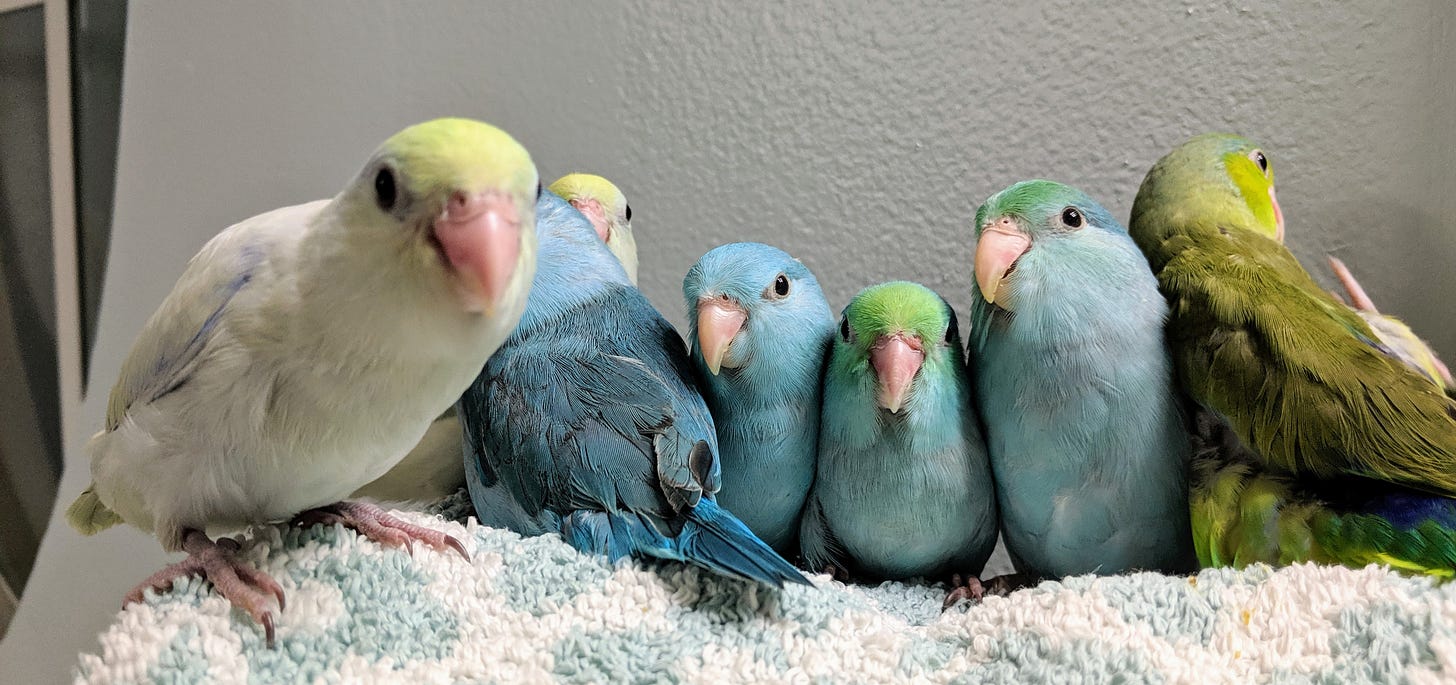
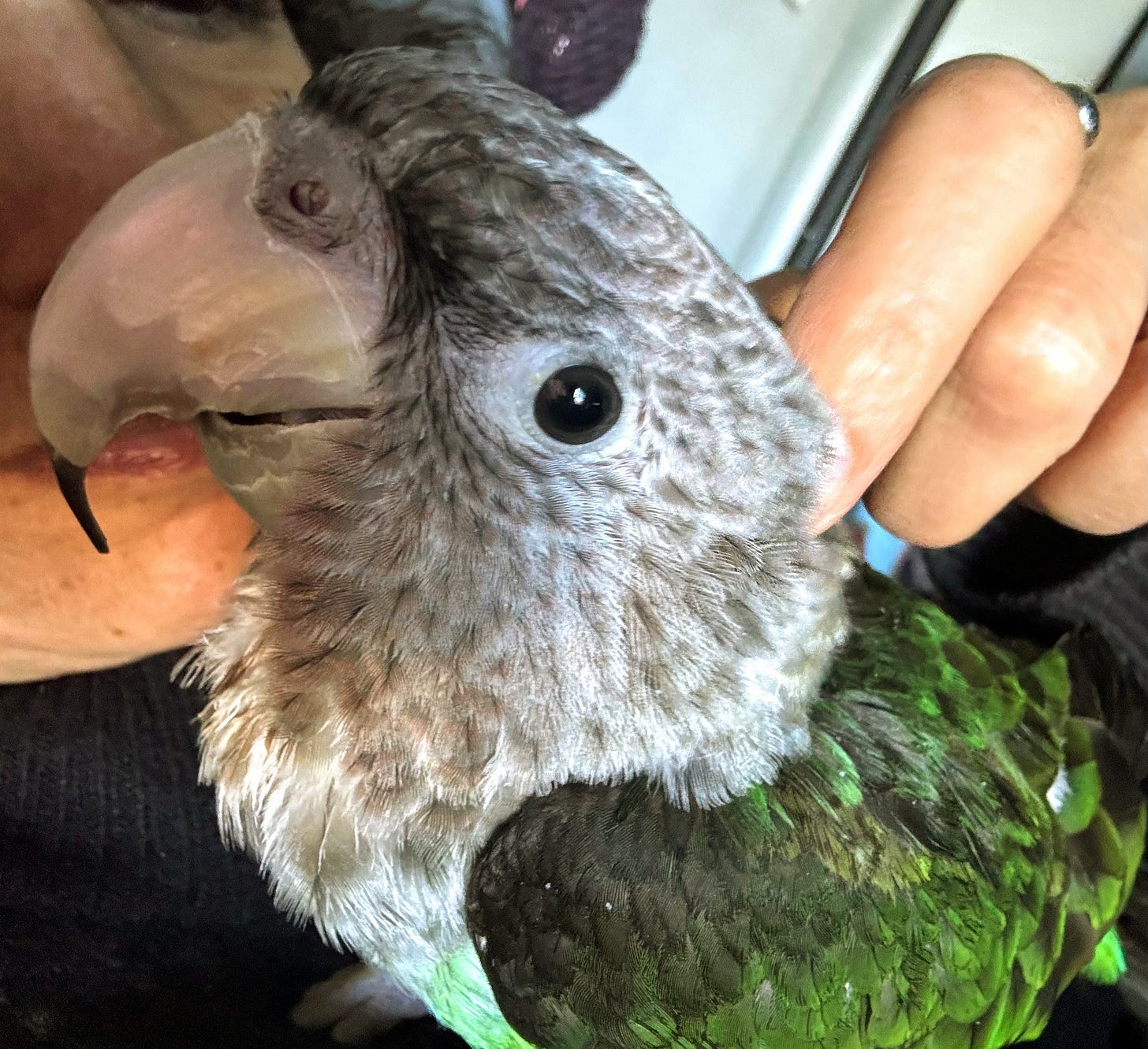
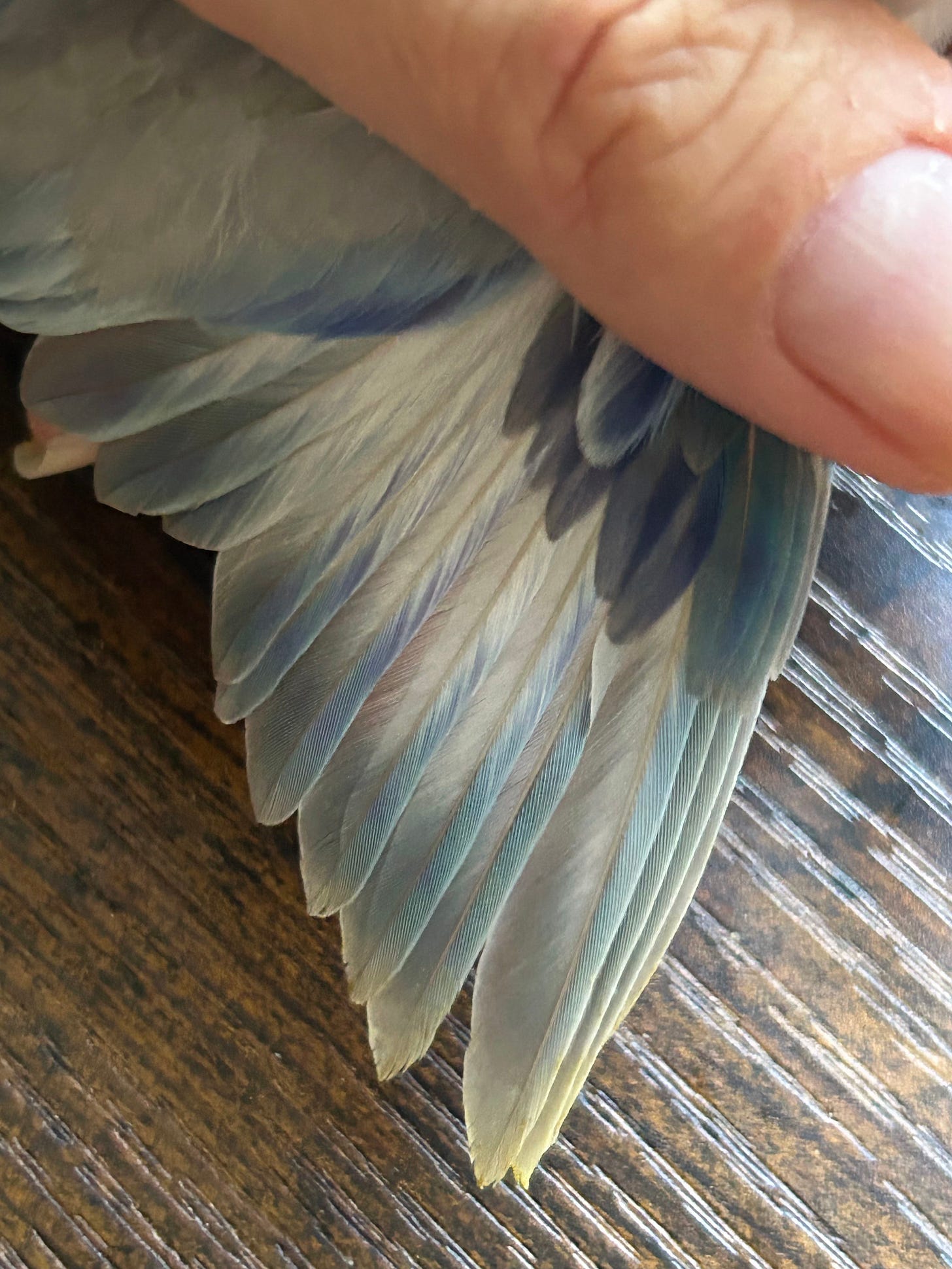
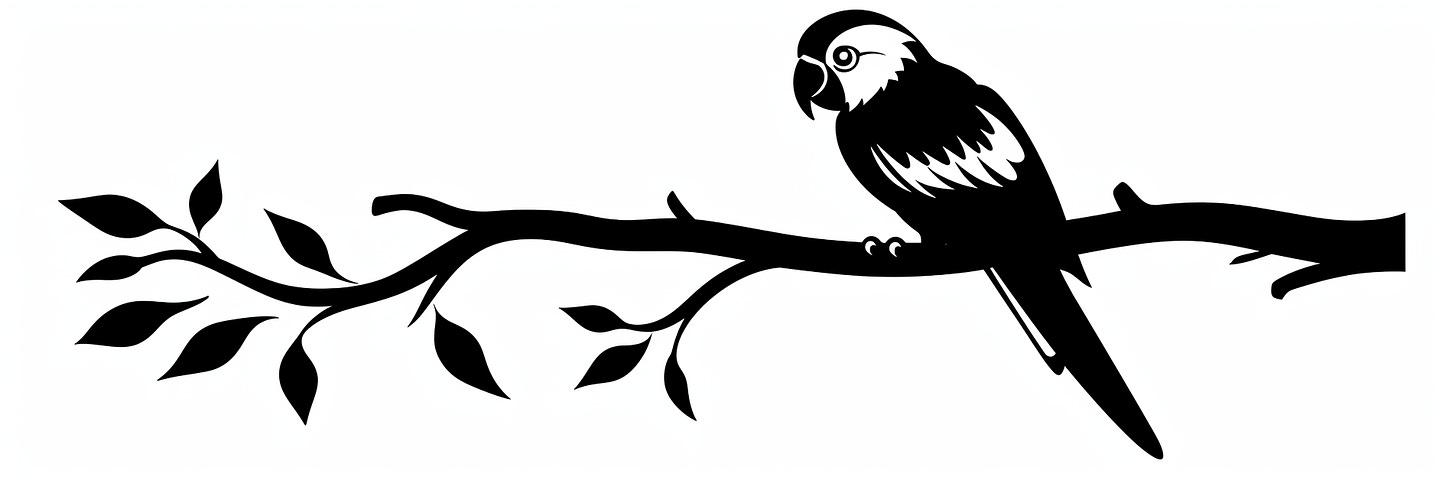
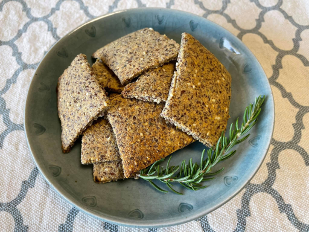
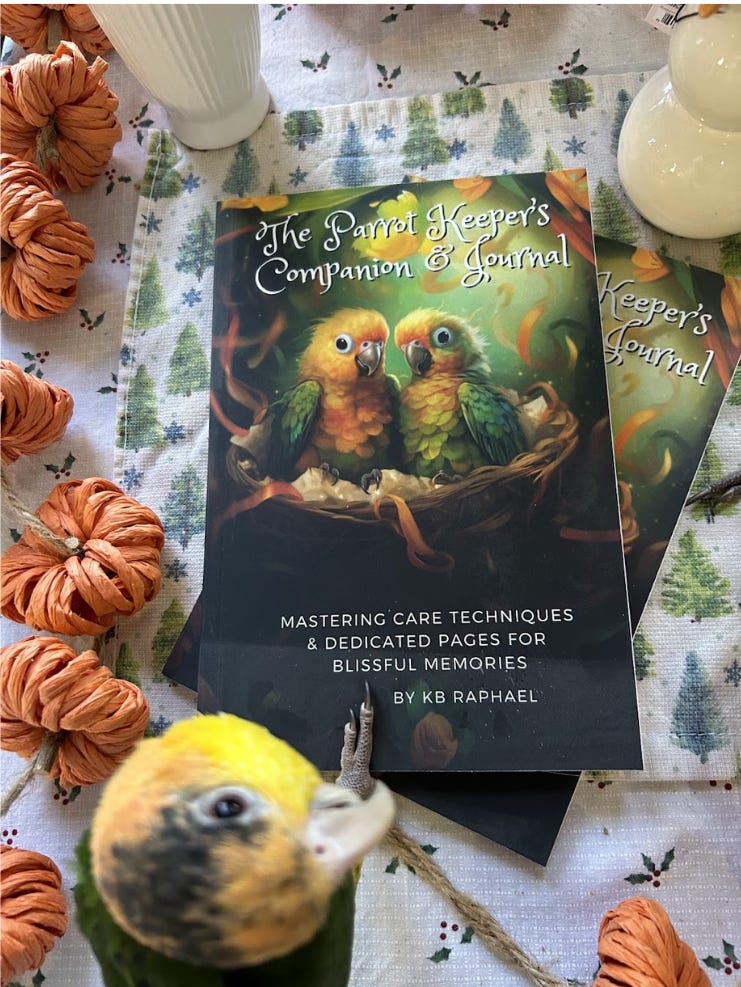
Wonderful! Full of valuable information. As you know, I adore Caiques. There is a woman in Ft. Worth, Texas that breeds Lime Thighed Caiques. A dream bird for me. Caiques are busy, busy, busy. They can be flying terrorists. Ivar is currently obsessed trying to take his cage apart. He hasn’t met a zip tie he can’t chew though in less than 30 minutes. I agree what you wrote concerning wing clipping. It truly is a hot topic. It’s very similar to declawing a cat. But, declawing involves amputation. Personally, I’d rather see a cat declawed if it means keeping in it in the home. ☺️
Wow! Lime hugged Caiques! Wow! Are they super expensive? I wonder if you will get one!